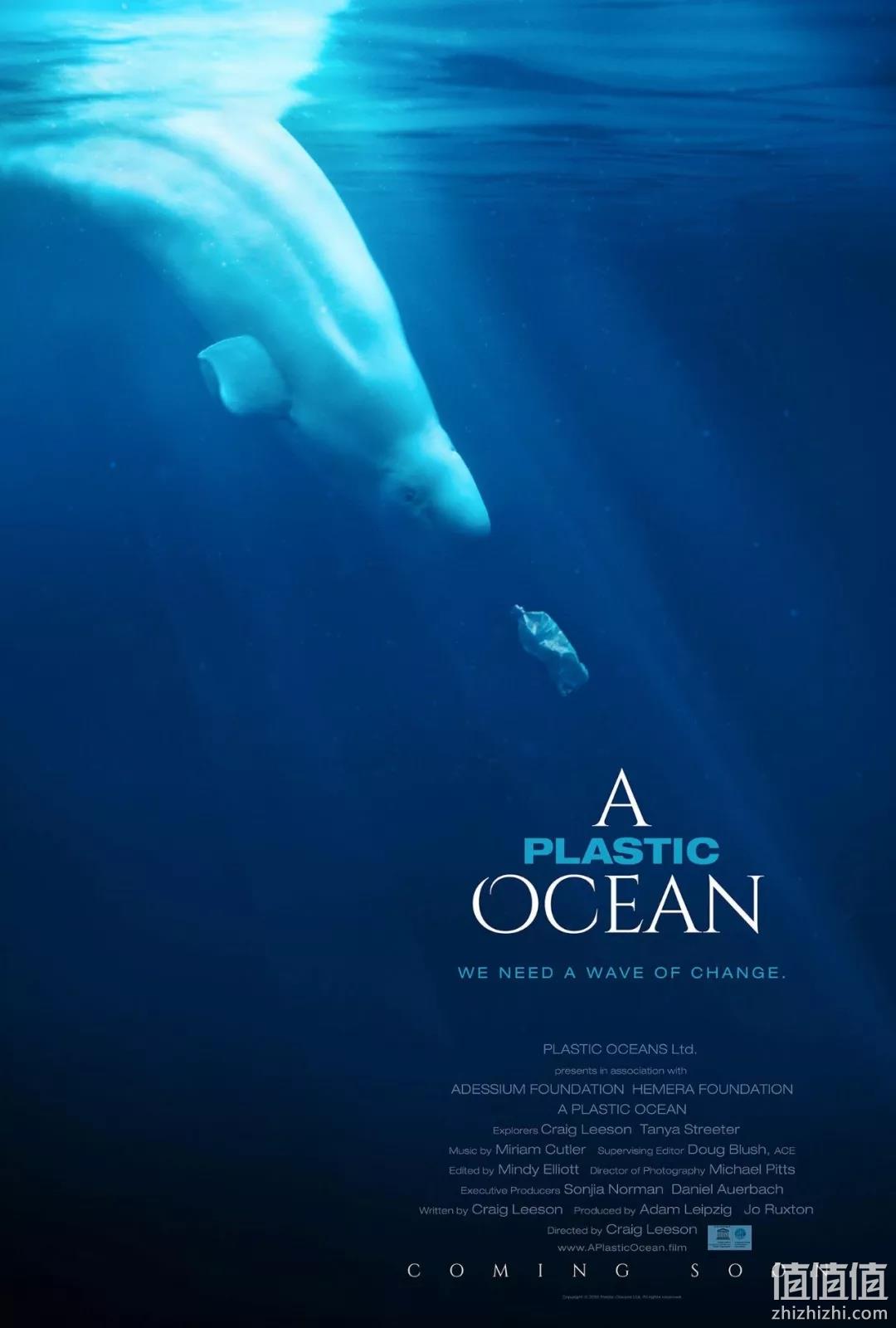系列活动 | 纪录片《A Plastic Ocean塑料海洋》深圳放映会
我们每天点着外卖的同时,是否有思考过这些塑料包装最后去了哪里?当把它扔进垃圾桶的那一刻,我们就以为它消失了。而事实上,这才是噩梦的开始。塑料被扔进海里,分解成塑料微粒,带着毒素,被鱼吃进肚子里,最后再进入人类的餐桌。
Lots of us order takeaway every day, but have you ever thought about where these plastics go eventually? The minutes we throw it into the trash bin, we thought it's gone. However, this is exactly the beginning of the nightmare. Plastics will be thrown into the ocean. They break down into small pieces with toxins. Fish eat them and come back to human being's dinner tables eventually.
你可知道...每年约有800万吨的塑料倾倒入海洋;截止2015年,人类总共制造了69亿吨塑料垃圾,只有9%被回收;超过40%的塑料只使用一次便被成了垃圾;到2025年,海洋里每3公吨的鱼就有1公吨的塑料;到2050年,海洋里塑料的重量将会超过鱼类;......
Do you know that...
About 8 million tons of plastics are dumped into the ocean each year; Until 2015, there were 6.9 billion tons of plastics waste, and only 9% was recycled; 40% of the plastics was only used for once before they became trash; By 2025, there will be 1 ton of plastics for every 3 tons of fish in the ocean; By 2050, plastics in the ocean will weigh more than fish;
......
海洋调节气候并为地球上所有生物提供赖以生存的水源。但是,污染已经严重地威胁到了海洋生物的生命及核心功能。每个人都需要知晓塑料的去处,并行动起来。
The ocean regulates climate and provides water for all life on the earth. However, pollution has seriously threatened the marine life and core functions of the ocean. It is important for everyone to know where the plastics go and act on it.
由零废弃联盟、壹基金和万科公益基金会发起的“首届零废弃日”发布会和主题沙龙将在8月18日的北京举办,全国各地的伙伴也纷纷响应这项绿色运动。由共创伙伴“Go Zero Waste (零活实验室)”在地组织的《A Plastic Ocean塑料海洋》深圳放映会作为第四届亚洲环保创新论坛(AEIF2018)系列活动的第一场面向公众推介。
如果你不知道自己怎么参与零废弃
或许可以从这部纪录片开始......
If you have no idea what you can do for the ocean,
perhaps you can start with this documentary......
时间: 2018年8月18日(周六) 15:30
活动地点:深圳市福田区民田路星河
cocopark西侧三楼福田白领e家
费用:免费
Time: 15:30, 18 October 2018 (Sat)
Location: eHouse, 3/F Cocopark
Fee: Free
影片介绍
《塑料海洋》由生活在香港的澳大利亚记者Craig Leeson担任导演和编剧。他在寻找难以捉摸的蓝鲸时,在本应该是原始的海洋中发现了塑料垃圾。随后,Craig 与一些国际性的专家们展开合作,他们花了四年的时间,前往世界各地的二十个地方,去探索海洋的脆弱状态,揭开关于塑料的令人震惊的污染真相。
Introduction of the Film
A Plastic Ocean is written and directed by Craig Leeson, an Australian journalist living in Hong Kong. He was looking for the elusive blue whales, instead, he found plastic wastes in what was supposed to be the pristine ocean. Craig then collaborated with international experts and spent 4 years time traveling to 20 places around the world to explore the fragile state of the ocean and to uncover the shocking truth about plastic pollution.
在这100分钟的影片里,我们会看到令人痛心的真相:海鸟因进食塑料瓶盖而死亡、海豚体内充斥塑料化学物、海洋生物被废弃的塑胶容器和渔网缠身等等。但最重要的是,这部影片将启发我们思考:面对塑料污染,我们究竟能做些什么?
In this 100-minute film, we will see the painful truth: seabirds die from eating plastic bottle caps; plastic chemicals are inside the dolphins' bodies; marine life is trapped in discarded plastic containers and fishing nets. Most importantly, this film will inspire us to think: what can we do about plastic pollution?
纪录片《塑料海洋》向我们揭露了塑料废弃物伤害海洋的惊人程度!
1.看见的,看不见的海洋污染
在距离斯里兰卡南边20英里的印度洋里,摄制组们收集到了以下这些奇奇怪怪的漂浮物。一只白色鞋子里面居然发现藏着一只螃蟹!
而这些塑料海洋污染主要来源于六个国家:中国,泰国,越南,菲律宾,印度尼西亚和斯里兰卡。
为了一探海底的情况,摄制组们潜到了海底,在深度计数器显示海底1600米的地方,发现海底居然也是有着许多塑料瓶。
2.不可忽视的塑料微粒
科学家们预测全世界有超过5亿万的塑料碎片漂浮在我们的海洋里。
在北太平洋环流,亚热带汇合区,摄制组们看到的不是一座漂浮的塑料岛屿,而是覆盖整个水域的塑料雾霾。
随着时间的推移,塑料在阳光,海浪,盐的共同作用下开始分解,变成更细小的颗粒,最终成为塑料微粒。
更严重的是,海水中的毒素通过粘附在塑料垃圾在海洋四处游荡,被海洋生物摄食,最终可能通过食物链进入人体。
纪录片中介绍,用在脸部磨砂、牙膏等化妆品中的塑料微粒是海洋中塑料微粒的重要来源,他们认为这些含塑料微粒的产品应该在全世界被禁止使用。
3.香港塑料灾害事件
2012年7月23日,韦森特飓风袭击香港及其邻近水域,造成七个货柜堕海,其中六个货柜装载由中国石化生产的聚丙烯颗粒在风暴过后于香港南面海域漂流。
部分货柜遭海浪击毁,使柜内胶粒进入海洋,成为海洋垃圾,并随水流散布于香港南部海域及岸滩,造成广泛环境及生态污染,同时影响本地渔业。
4.杀死海鸟的凶手
距离悉尼东北边600公里的豪勋爵岛,科学家们在解剖鸟的肚子的时候发现了鸟的胃里装满了各种大小的塑料碎片。他们取出一只海鸟胃中的塑料,通过称重发现塑料的重量居然占据了这只小鸟该鸟体重的15%。Lavers博士说,“如果我们按照人类的标准计算,就相当于在你的胃里,有6到8公斤的塑料制品。想象一下你会过着什么样的生活。”
《A Plastic Ocean》提出该如何解决这个全球性的危机,而更重要的是各国政府和企业需要履行更多废物管理及资源利用效率的承诺,人们应细心挑选购买的产品,知晓回收循环的方法,以及以个人身份如何作出明智抉择。
面对塑料海洋污染
我们能做些什么?
青年人这里有答案... ...
AEIF2018
我们一直在思考,如何让更多青年人参与到可持续发展目标(SDGs)的实现过程中,如何进一步提升自我认知,投入更多行动改变的热情?
This year we are seeking... How might the youth generation find more passion for Sustainable Development Goals (SDGs)? What would it take to design such a collaboration?
